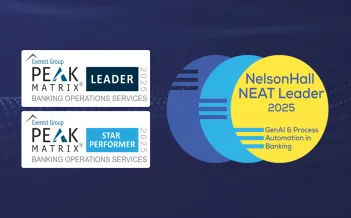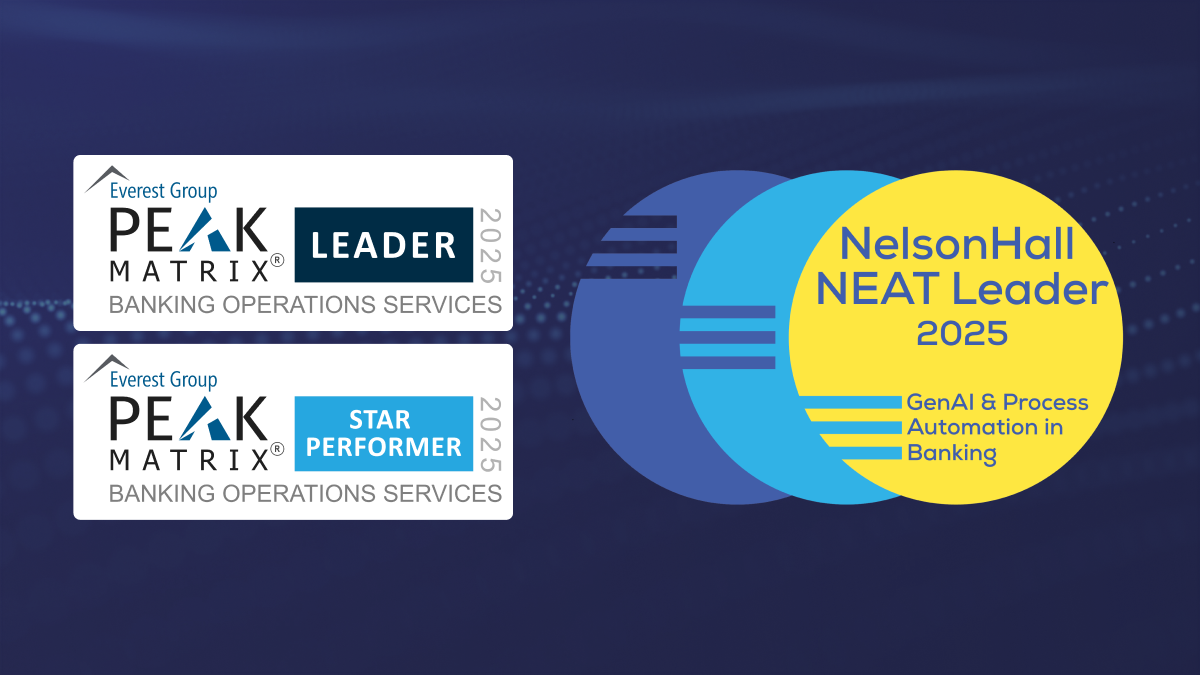Forward-looking companies will potentially get more done in the next 18 months than they have accomplished in the last 10 years. Forced to adapt almost overnight to the ‘next normal’ in the post-COVID world, savvy companies are thinking divergently to meet customer and employee needs. They are building new ways to work remotely at scale and quickly bridge operational and supply gaps. In the process, these companies are taking their automation game to the next level by embracing Extreme Automation (XA).
Also defined as Intelligent Automation, Hyper automation or One-above-all automation, XA is primarily the amalgamation of Artificial Intelligence (AI) technologies such as Robotic Process Automation (RPA), Machine Learning (ML), Advanced Analytics, Natural Language Processing (NLP) and more.
When applied to Business Process Management (BPM), XA lays the foundation for Intelligent Process Automation (IPA) or the Next-Gen Operating Model in a digital-first world. This operating model combines digital technologies and operations capabilities in an integrated, sequential manner to achieve step-change improvements in revenue, customer experience, and cost. The market for global Intelligent Process Automation (IPA) pre-COVID was expected to be worth USD 10.0 billion in 2020 and reach USD 16.3 billion in 2025, growing at a CAGR of 10.2%.
According to a recent survey conducted by Bain & Company, the post-COVID market will likely witness more than 50% increase in automation investments, predominantly from the banking and financial services, healthcare, life sciences, and manufacturing verticals.
COVID-19: The catalyst for Extreme Automation
Most industries were already on their endeavor to adopt digital transformation to reduce costs, but the sudden outbreak of the pandemic exposed hidden vulnerabilities in legacy processes. Ill-prepared for an overnight shift to 100% digital operations for an extended period of time, the majority of industry verticals encountered (and continue to face) operational delays and service-related issues. Customer service is one of the hardest-hit functions across organizations.

Harvard Business Review recently conducted a study of roughly 1 million customer-service calls involving more than 20 companies representing a broad cross-section of industries. The study reveals disturbing insights for customer experience and service leaders. In just two weeks, most companies witnessed a 2X surge in the percentage of calls scored as “difficult” – going from a typical level of 10% to more than 20%.
Pandemic induced issues ranging from unexpected travel cancellations to requests for bill payment extensions and disputes over insurance coverage — dramatically increased the level of customer emotion and anxiety in service calls.
One company in the study saw financial hardship-related calls, among the most difficult for service representatives to handle, increase 2.5 times in the span of a week. Some companies even witnessed hold times soar by as much as 34% and escalations skyrocket more than 68%. To make matters worse, customers aren’t the only ones getting frustrated. Customer service associates — most working from home for the first time — now find themselves without the infrastructure (like a reliable high-speed phone/broadband connection) or support (from peers and managers) they were used to at the contact center. Clearly, a job that is hard for associates on a normal day is far more challenging now.
So, how can companies navigate this customer service crisis and elevate the experience for customers and associates alike?
By embracing digitization to elevate the human experience. With COVID-19 making ‘human interaction’ the epitome of customer service, applying Extreme Automation (XA) to business process management will help organizations humanize every aspect of business, while simultaneously improving operational efficiency, reducing costs, streamlining time management, accelerating outcomes, and ensuring business continuity.
For any organization, how effectively and efficiently the combined potential of people, process and technology can be harnessed today, will be pivotal to success and prove a key differentiator in the future. The time is ripe for organizations to go beyond RPA that focuses on discreet business processes and uses bots to automate highly repetitive, routine tasks to XA that leverages advanced automation tools and AI to unlock new possibilities and insights.
QUICK TAKE
By 2024, organizations will lower operational costs by 30% by combining hyper-automation technologies with redesigned operational processes.
Source: COVID-19 accelerates enterprise use of automation in digital transformation
Putting Extreme Automation into action: What it takes

Adopt a strategic enterprise top-down approach
Crafting an effective XA strategy requires securing buy-in and support from all c-suite executives.
Define the role of IPA in the next-gen operating model
Assess the as-is state, understand how automation can work across business functions, and employ a balanced approach towards ROI and benefit analysis.
Aim to leverage the full portfolio of IPA technologies
Leverage a wide gamut of IPA technologies including RPA, AI, ML, NLP, analytics, etc.
Adopt an agile fail-fast approach to onboard automation and quickly course correct when required.
Consider launching an MVP or Minimum Viable Product that can accomplish the task at its most basic level.
Establish an ecosystem of Digital FTE operations
Use digital technologies to free up FTE hours. Adopt a collaborative robot (cobot) approach for bots and humans to work alongside leveraging Cognitive Intelligence, such as in ‘Predictive Decisioning’.
Democratize automation using a bottom-up approach
Establish an automation Center of Excellence (COE) to provide reskilling training to employees in IPA technologies and cultivate a digital-first culture.
Getting Extreme Automation right requires extensive domain and operations experience.
Working with a partner that can not only guarantee but accelerate outcomes with proven blueprints and ready-to-use tools and technologies can make all the difference.










